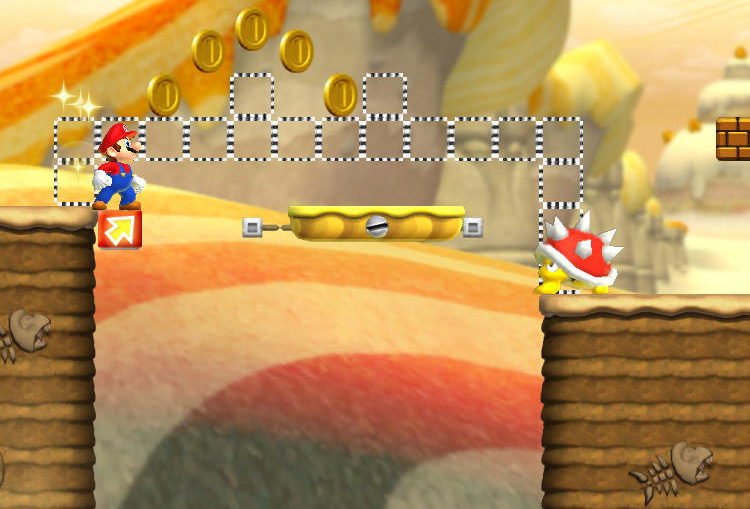[We’d like to introduce you to the FNG at Stately Play Manor, Nick Vigdahl. You might have seen his work at another site whose name eludes me right now. Pocket something. It will come to me. Anyway, as the FNG, we threw Mario at him all the while muffling our laughter at his misfortune. Instead of pouting about having to review a rather shallow runner, Nick decided to look at Mario in a larger light. I think you’ll see why he’s a welcome addition to the site, and hope you help us in welcoming him aboard. -ed.]
Following months of hype and domination of prime App Store real estate Super Mario Run was released to eager iOS gamers last week and the user reviews are, well, let’s say less than glowing. Mario has been reviewed over fifty-four-thousand times in just a few days—a staggering number—and is averaging about two-and-a-half stars. Not great. So what gives?
Paging through the reviews a common theme jumps out. Mario’s woes are best characterized by one review subject line in particular: “Free… NOT!” That particular reviewer goes on to comment that “Super Mario Run is not take and play. I got it, played 3 levels, and then BOOM, full game for $10.” Other review titles—”Only 3 levels?!?!”, “Buying levels?”, and “Seriously?!”—provide yet more evidence of what iGamers don’t like about the game. One-star is the most common review score and it’s tough to find any that don’t cite the $10 price tag as the reason.
“Free-to-play” and “freemium” tend to be a pejoratives to the type of audience that gravitates toward sites like Stately Play. This often makes it easy to forget that free is an absolute requirement to a much larger audience. You need look no further than the sheer dominance of free games on the App Store—79% of the active games in November were free—to know that people like free games and no further than our poor plumber’s rotten reviews to know how they’ll react to games that appear free, but are in fact not. Most people don’t seem to mind the typical freemium mechanics if it means they don’t have to pay for their games. Even the dreaded energy bar, the most egregious of addiction-exploitation mechanics, isn’t a big deal as many people don’t mind playing games in short bursts and then waiting minutes or hours to get back in. They aren’t aware that their free ride is often subsidized by the person who can’t wait, and is willing to pay—often far more than they can afford—to keep at it.
This is not to say that all freemium developers are looking to exploit their players, because they aren’t. [Take a look at Battle of Polytopia to see freemium done right -ed.] The fact remains that Nintendo could very easily have used these same, super common mechanics and nobody would have questioned the decision. That would have been the easy path, and I’m sure some would say the smart one as well. Instead, they went with a try-then-buy approach and, frankly, should be applauded for it especially by those of us who want more premium games on mobile and/or who think that developers should be rewarded for their hard work. Nintendo might be our best—though hopefully not last—hope to see more big-time mobile games with a pay-once-and-play price tag. If they make tens-of-millions of dollars on Super Mario Run other big-name studios will take notice and look to replicate their success. If that happens we might see a shift in mobile-gamer expectations that will make it easier for indie devs to follow suit and turn a profit.
So is Super Mario Run any good? I don’t know yet. This isn’t a review and you don’t need one from me. That’s why there is a free trial. I can tell you one thing though…I sure am rooting for the plumber. Boing!



Good first post. Glad to have you on board. Welcome!